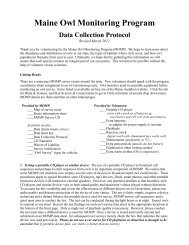Focus Species Forestry - Maine Audubon
Focus Species Forestry - Maine Audubon
Focus Species Forestry - Maine Audubon
Create successful ePaper yourself
Turn your PDF publications into a flip-book with our unique Google optimized e-Paper software.
Aspen-Birch<br />
____________________________________________<br />
Overview<br />
Single-tree and<br />
Group Selection<br />
Shelterwood,<br />
Small Patch<br />
Cuts, and<br />
Clearcuts<br />
Other<br />
<strong>Focus</strong> <strong>Species</strong> Management<br />
Even-aged management is generally recommended to maintain aspen-birch forests.<br />
Alternately, landowner objectives or landscape analysis may suggest that encouraging<br />
natural succession to take place is the preferred option. When present, aspen-birch is<br />
an excellent type for developing and maintaining early successional habitat. Aspen<br />
regenerates by root suckering, while wind-blown seed is the primary method of birch<br />
regeneration. An irregular harvest that leaves unharvested patches and individual<br />
trees of long-lived species will emulate natural disturbances better than traditional<br />
even-aged management.<br />
Avoid single-tree selection if the goal is to maintain aspen-birch.<br />
Large-group selection will sustain these species, but there will be an increasing<br />
component of more shade-tolerant species over time.<br />
Small patch cuts (2-5 acres), seed-tree cuts, or clearcuts are the best for<br />
regenerating aspen-birch and providing the dense regeneration preferred by<br />
ruffed grouse and woodcock. Shelterwood may result in excessive birch mortality<br />
and discourage root suckering of aspen.<br />
Refer to landscape-scale guidelines (Section 8). Use the amount of aspen-birch in<br />
the landscape and the amount of other early successional hardwoods to help<br />
decide whether to maintain aspen-birch or encourage succession to another type.<br />
Soil scarification is important for birch regeneration.<br />
Older declining aspen clones may not sprout well.<br />
Follow recommendations for snags, cavity trees, and downed woody material and<br />
other stand-level recommendations (Section 7).<br />
If the goal is to encourage succession, on better sites northern hardwoods can be<br />
favored by thinning and eventually released by removing part or all of the<br />
overstory. On poorer sites spruce and fir, which often become established in the<br />
understory, may be released as the aspen and birch mature.<br />
Try to maintain aspen inclusions in other forest types near riparian areas where<br />
beaver may be present.<br />
References: DeGraaf et al. 1992, Degraaf and Yamasaki 2001, Elliott 1999, Eyre 1980, Marquis et al. 1969,<br />
Perala D. 1977<br />
<strong>Focus</strong> <strong>Species</strong> <strong>Forestry</strong> 19



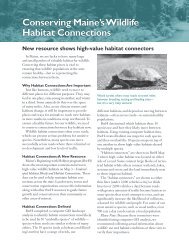
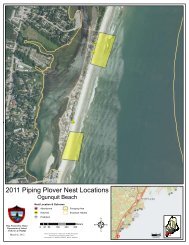

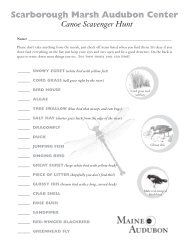


![2012 Loon Count Results [pdf] - Maine Audubon](https://img.yumpu.com/26228732/1/190x245/2012-loon-count-results-pdf-maine-audubon.jpg?quality=85)
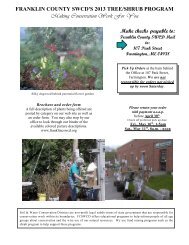
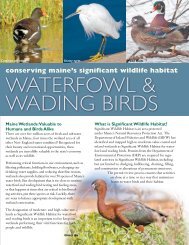
![Lake Fish of Maine (DIFW list) [pdf] - Maine Audubon](https://img.yumpu.com/23282964/1/190x245/lake-fish-of-maine-difw-list-pdf-maine-audubon.jpg?quality=85)
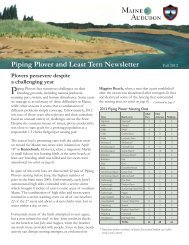

![The Maine Audubon Peony Circle of Friends 2012 [pdf]](https://img.yumpu.com/22707677/1/190x253/the-maine-audubon-peony-circle-of-friends-2012-pdf.jpg?quality=85)
